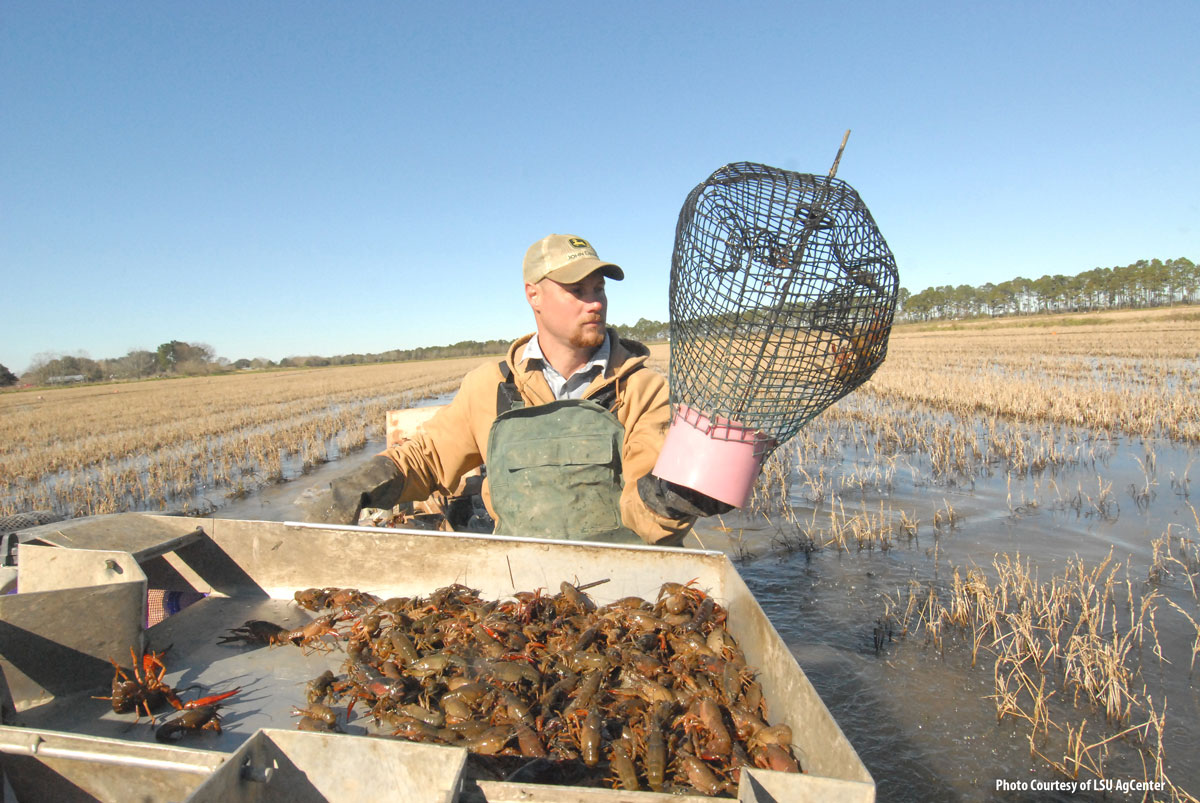 Crawfish harvest
Crawfish harvest
Apr 07, 2020
SOUTHWEST, LA -- Spring in Louisiana is supposed to be a lively, bustling time. It’s planting season for rice farmers, Mardis Gras for tourists, and crawfish boils for the locals. But the COVID-19 pandemic has turned everything on its head, with Governor John Bel Edwards issuing a stay-at-home order on March 23 for all non-essential workers and businesses through at least April 30. And that means crawfish farming, like so many other industries, has taken a hit.
This time of year is normally the peak of crawfish season for Louisiana farmers. Usually, consumers all over the South would be hosting big outdoor boils with friends and family, but coronavirus social distancing protocol has made the tradition downright dangerous.
To make matters worse, restaurants and catering companies across Louisiana that normally purchase crawfish from local farmers have closed their doors. While many restaurants and retailers are offering both live and prepared crawfish for take-out, drive-through, and delivery, the fact remains that not as many people are eating crawfish during isolation and quarantine, which means farmers are selling less and, by necessity, fishing less.
Jeff Durand, a rice producer based in Martinsville, whose family has been farming crawfish since the 1960s, has been catching fewer crawfish. “We’re alternating running about half of our traps one day and half the next, so we’re still catching some, but it’s only about half. It is hurting the farming industry here, both the crawfish farmers and the rice farmers that depend on crawfish to help supplement their farming operation.”
It has also been harder for farmers to sell the smaller crawfish from their catches. “You can’t sell them to market as easily because they’re less desirable,” said Fred Zaunbrecher, who farms rice and crawfish with his brothers on GF&P Zaunbrecher Farms in Duson. “The higher the quality, the easier to sell. The buyers are only purchasing in limited amounts, and that’s going to be the bigger crawfish, not the smaller ones.”
The price of crawfish has also dropped precipitously by a dollar per pound over the last few weeks. “That’s in the range of a 40-50 percent hit that we’ve taken in price,” said Zaunbrecher. “These being our most productive months, that calculates into a big chunk of change.”
Labor is also an issue. Farmers find themselves having to pay workers to catch crawfish even on days when they can’t fish, and due to social distancing, fewer workers are in the peeling and processing plants.
“It’s putting a hurt on the peeling plants because the workers are nervous being around people in concentrated areas,” said Allen McLain, a rice and crawfish farmer based in Abbeyville.
Additionally, some farmers are worried about what will happen if restrictions on truck travel should arise. “We have a market we supply in Texas, and we don’t know what’s going to happen with the issue about crossing state lines with vehicles from other states,” said Zaunbrecher.
Last week, the Louisiana Farm Bureau Federation and the Louisiana Department of Agriculture and Forestry sent a letter to USDA Secretary Sonny Perdue, thanking him for his continued leadership during this crisis and urging him to consider crawfish farmers as recipients of direct COVID-19 assistance as part of the $9.5 billion Coronavirus Aid, Relief, and Economic Security (CARES) Act, an action seconded by the Louisiana Rice Producers’ Group.
Despite the uncertainty they’re facing, rice and crawfish farmers are nothing if not resilient, and they’re finding ways to both cope and stay safe. Due to the worldwide shortage of medical face masks, Durand and his family have been wearing masks meant for grain bin use while out in public. Zaunbrecher has been bulking up on inventory such as bait and fuel so they don’t run out due to disrupted supply chains. And they’re all adhering to social distancing, even while out fishing for crawfish, because the farming lifestyle lends itself to keeping six feet apart, if not six acres apart.
The good news is there is plenty of crawfish, and consumers can help out by eating more of it. Restaurants are still doing takeout, and many are willing to sell fresh, live crawfish by the pound to those who are interested.
“You just have to find your local retailer or fisherman to buy from and know that they’re still trying to make a living,” said McLain. “We’re still selling crawfish and trying to fish every day. You don’t have to wait for the weekend to get crawfish.”
While large gatherings are out of the question, small crawfish boils in the backyard with immediate family are still an option. And if you have neighbors or elderly family members in need, consider cooking up a big batch of gumbo or jambalaya and delivering it to their doorstep, as long as you follow safety recommendations.
Crawfish season is far from over, and our farmers will be catching big, fresh crawfish well into June, so if restrictions are eventually eased, crawfish will still be available.
“Farmers have been designated an essential business with good reason,” said USA Rice President & CEO Betsy Ward. “They’re out there producing the food we rely on to stay healthy when it’s more important than ever. They’re still growing rice and they’re still catching crawfish, and cooking fresh, local, delicious comfort food.”